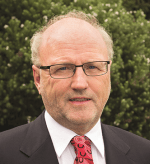Published on the 28/01/2015 | Written by Paul Budde

The internet of things may feel like it only uses wireless technology but in reality it relies on big pipes and banks of servers. Paul Budde explores what we need to do in order to arrive at the smart cities of the future…
Transforming our cities into the ‘smart cities’ of the future will require us to incorporate technologies and key digital developments that are linked by machine-to-machine (M2M) solutions and real-time data analytics. In short; the Internet of Things. To achieve this however, smart cities will have to be underpinned by the appropriate ICT infrastructure based on fibre optic and high-speed wireless technologies. This is well underway in many developed cities around the world. This infrastructure allows for the development of many exciting solutions in smart cities: developing smart communities; connected homes; intelligent transport systems; e-health; e-government and e-education; smart grids and smart energy solutions to name a few. Many of the technological advancements emerging around the world today can, and will be, applied to smart cities. Artificial Intelligence, electric vehicles, autonomous vehicles, mobile applications, drones, and wearable and smart devices are just some of the key developments to watch. Artificial intelligence developments are accelerating and, as more companies enter this sector and start investments to grow it, we will see further astonishing innovations emerging over the next few years. AI applications are already being used in healthcare and gaming, just to name two sectors adopting this cutting edge technology.
“Smart cities will have to be underpinned by the appropriate ICT infrastructure based on fibre optic and high-speed wireless technologies.”
‘Smart transport’, also known as ‘intelligent transport systems’ (ITS), increases the safety and efficiency of transport networks – from public bus, tram and train transport, to rail and road freight transport, and private and commercial road transport. ITS systems include the software and hardware for electronic vehicle-to-vehicle and vehicle-to-infrastructure communication and information systems. In 2014 there are already hundreds of thousands electric vehicles (EVs) on the road around the world and by 2015 there may be more than 2.5 million plug-in electric vehicles (PEVs) in operation. It is thought that the business sector may become a key driver to the uptake of PEVs once the market is further developed and becomes a viable solution for enterprise fleets. Unmanned aircraft, known colloquially as drones, are also certainly going to play a larger part in global developments and have many potential applications for the smart communities of the future. While most countries currently restrict the use of drone devices, it is thought that this will change quickly once the applications for such technology fully emerge and can be properly regulated. Agriculture applications in particular offer huge opportunities for drone usage along with telecommunications, defence, traffic management, surveillance, mapping, emergency services, weather monitoring, resources exploration and environmental analysis. The development of smart cities and indeed smart countries requires vision and recognition of the fact that many of today’s social, economic and sustainability problems can only be solved with the assistance of ICT. In many situations the uniqueness, affordability, capacity, robustness, security and quality necessary for this calls for fibre optic and high-speed wireless infrastructures. This need will increase dramatically over the next five to 10 years as industries and whole sectors carry out the process of transforming themselves in order to much better address the challenges ahead. Paul Budde is the CEO of BuddeComm, an independent research and consultancy company, focusing on the telco market. Its research encompasses 190 countries, 500 companies and 200 discrete technologies and applications. Paul is also the special advisor to the UN Broadband Commission for Digital Development.


































